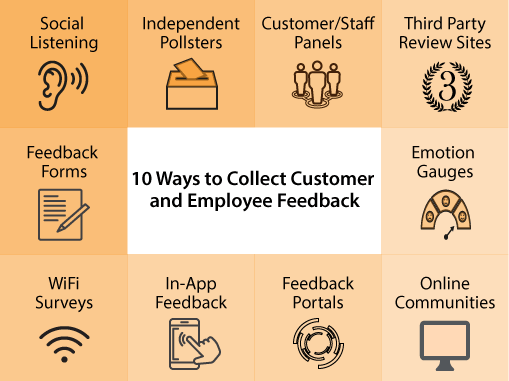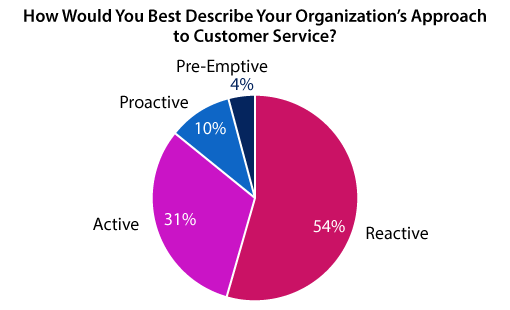20th May 2020

We present ten great customer service strategies, each recommended by a legend of the customer service and contact centre space.
Each strategy also has its own dedicated article for you to click on to find out more about how you can make it work within your organization.
These customer service strategies were shared with us by Paul Cooper, who was a greatly respected and well-known figure throughout the customer service and contact centre industries.
Hire for attitude, train for skills…
People with the right attitude are essential to building a successful customer service strategy. “Hire for attitude, train for skills,” should be the maxim.
Once in place, a planned training programme in both job skills and people skills must be maintained.
This is not an area for cost-cutting if the market gets tough. Consider formal customer service qualifications for all staff.
Don’t just throw the issue at your HR department, identify job specifications and make it clear what you want. This will help to ensure that your new people fit your culture.
Find Paul’s advice for implementing this strategy in our article: Top Customer Service Strategies – No.1 Recruit and Train the Right People
Staff retention is crucial to improving your organization’s customer service. Research shows clearly that staff stay when they are happy and respect the organization for which they work.
Efforts should therefore be directed at recognition and development programmes to determine potential, and a well-thought-out career plan structure.
The video below shows us how we can improve self and staff development. It was taken from an old Call Centre Helper webinar, in which Paul himself does the talking.
However, just coming back to the topic of creating happy, engaged customer service teams, we must also ask ourselves the following questions. These will help us gauge where we’re at.
For more great advice on this topic, read our article: Top Customer Service Strategies – No. 2 Happy Staff = Happy Customers
Retaining customers is normally cheaper and faster than acquiring new ones. That’s the first lesson of business school and it’s a lesson that shines a light on the importance of customer loyalty.
Loyal customers are active advocates of your organization, and they also tend to be more profitable, more interested in helping you improve your products and services, and more forgiving of your occasional mistakes.
Yet don’t confuse customer loyalty with customer relationships, they are two different things. Some customers don’t want relationships, but will stay loyal if your customer experience meets their values and if you are very easy to do business with.
Find Paul’s advice for keeping customers loyal in our article: Top Customer Service Strategies – No. 3 Recognize the Importance of Customer Loyalty
Getting customer service right in an organization… is a long-term commitment…
Getting customer service right in an organization, and continually improving it, is a long-term commitment that must be made by those at the top.
Leaders need to recognize its importance, believe in the strategy, be active in leading by example, and take actions that support those charged with carrying it out.
So, as contact centre managers and leaders, you need to bang the internal drum and consider:
For more on how to be a great contact centre leader, read our article: Top Customer Service Strategies – No.4 Lead from the Top
It’s probably not what you think. Regularly listen to and analyse customer phone calls. Have feedback focus groups and suggestion schemes. Consider speech analytics. Use your own systems to test what customers are facing. Listen to what your customers and staff are saying to you.
Don’t send out a customer satisfaction survey just because it is the standard thing to do, and carry things on as they are. We want an actionable customer and employee feedback strategy.
This strategy may include calculating metric results, employing focus groups or various types of survey. Whatever you do, the results must be actionable, accessible and auditable.
Here are a few more ways to listen to customers and staff, once you have set your purpose:

For more details on each of these methods and others, read our article: 25 Good Customer Feedback Examples
Find more of Paul’s advice for listening to your contact centre team in our article: Top Customer Service Strategies – No.5 Listen to Your Customers and Staff
Building on from the last point of listening to your customers, another great customer service strategy emerges and it is based on the idea of better utilizing customer complaints.
Just think about it in this way: complaints are free market research. They should therefore be welcomed.
Yet how can we better utilize them? Well, here is a good four-step process to follow:
While this proactive approach might even lead to a short-term increase in complaints, this is a false pretence. You always had them but didn’t know about it.
To go beyond this four-step process, read our article: Top Customer Service Strategies – No.6 Welcoming Complaints
Many organizations take an internal point of view on processes, trying to “improve” them without considering the customer or staff that actually have to use them.
Is the step in the process really benefiting everyone, or does it just make life easier for one area at the expense of others?
We also need to get the team in invested in new processes and follow up after roll-out.
Alongside this, let’s just add a second note that we also need to get the team in invested in new processes and follow up after roll-out.
Only by doing this can we know if we have met our vision of what success looks like, which we should have set out at the start of the process.
Find out how you can gain a perspective of your customers and staff in our article: Top Customer Service Strategies – No.7 Look at Processes from Varied Viewpoints
If any tools are being introduced primarily to reduce costs then it is doubtful whether real improvements in service levels will be gained, especially in the long term.
If they are to be considered as an integral part of a strategy which is about improving customer service, one or more of them could be very useful.
Just be careful to use tools with caution. There are no quick fixes in improving customer service, but there can be some quick wins.
Instead, when we implement new contact centre tools, we should take on a “crawl, walk, run” approach, with our main technology goal being to allow us to “do ALL channels well”.
With this goal in mind, take a step back before implementing additional tools, and ask yourselves:
For more on this customer service strategy, read our article: Top Customer Service Strategies – No 8. Use Tools With Caution
Each of your measures should provide you with actionable insight. If they do not, are they really worth measuring? Your time can most likely be better utilized elsewhere.
What this boils down to is that you should be measuring the right things, not the easiest things.
So, for each of your contact centre metrics, consider:
Alongside these, you should also be asking yourself: are you doing it to give yourself a warm feeling inside or to see where you have to make changes?
In terms of measuring performance, there are also three more key questions that you need to ask yourself:
For more on how to measuring the right things, read our article: Top Customer Service Strategies – No 9. Measure Your Performance
There is lots of great advice on the topic of measuring the right things in customer service in the following episode of The Contact Centre Podcast, which features a conversation with Morris Pentel, a well-known customer experience consultant.
The Contact Centre Podcast – Episode 11:
For more information on this podcast visit Podcast: Is It Time to Rethink Your Call Centre Metrics?
The full involvement and commitment of both staff and customers in a customer service excellence programme can depend greatly on your skills at communicating with them.
Good communication requires a coordinated strategy of communications utilizing all available tools, yet most contact centres are reactive and are therefore not proactively reaching out to customers. Just take a look at the following chart.

This chart contains data that was collected during our webinar: Proactive Customer Service – How to Do It Well
If you are a reactive contact centre, your organization’s reputation for great service can be easily lost.
Remember, being great at customer service is something to tell the world about, as long as you really are great.
Find more of Paul’s advice for building a reputation for your customer service in our article: Top Customer Service Strategies – No 10. Build a Reputation and Tell the World
As highlighted throughout this article, these great customer service strategies were passed on to us by the late Paul Cooper.
Paul was a leading member of the contact centre community – winning the Lifetime Achievement Award at the European Call Centre Awards 2011 – and was well respected by everyone who had the pleasure to work alongside him.
We were lucky enough to work closely with Paul on many occasions and before he passed away, and these strategies help to show that his ideas have truly passed the test of time.
Good customer service is seen by many as the most important differentiator between you and your competition and it helps to build a strong reputation for your organization in the marketplace.
As well as this, being known for having good customer service will entice people into working for you and staying with you, while it will also likely lead to customer loyalty and customer advocacy.
This all sounds great, doesn’t it? And these strategies can help get you there. But of course there are some pitfalls to watch out for.
With this in mind, let’s finish up with some key dos and don’ts to consider when implementing your customer service strategies, as recommended by Paul himself.
Do:
Don’t:
This article was originally put together by Paul Cooper, a valued and not-forgotten member of customer service and contact centre industries.
For more of our content on delivering great customer service, read our articles:
The success of this article inspired us to put together our own manifesto of ten articles for contact centre managers. You can read our manifesto here: Don’t Do ANYTHING Until You Have Done These 10 Things!
Reviewed by: Megan Jones